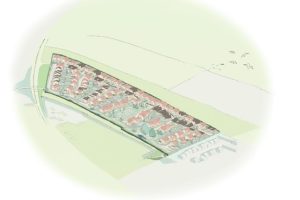Case poses question: When is a tree not a tree?

PROPERTY developers are being warned to take heed following a High Court ruling that means trees aren’t quite what they used to be.
Tree preservation orders have long been a major stumbling block when considering land development and the days when the Law Lords’ view that a tree should measure more than seven inches was accepted looks set to be replaced.
New guidance has been set by the High Court following a case involving developer Palm Developments.
Tony Emmott, commercial property consultant at law firm Gordons, said the case had important implications.
Mr Emmott said: “Palm Developments had gone to appeal on a site that the local planning authority, Medway Council, had issued a tree preservation order on following their purchase of the site.
“The developer’s application to remove some saplings below a specified size and the removal of trees was refused by the local planning authority and the Secretary of State.
“Palm’s subsequent argument to the High Court was that consent was only required for the carrying out of works to trees – not bushes, shrubs, scrub and or saplings, or trees which grew after the date of the order.
“However, the application was dismissed by Mr Justice Cranston who accepted the planning inspector’s conclusions that trees were capable of being protected at any stage of their life cycle and confirmed that ‘saplings of whatever size’ are protected by the woodland tree preservation order.
“He went on to broadly define ‘a tree’ as anything that would ordinarily be regarded as a tree, and although this does not include a shrub, a bush or scrub, it does include small trees. Therefore the smallest of saplings can now be regarded as a tree.”
But despite these guidelines it would appear there is some scope for those looking to argue the point, said Mr Emmott.
“The decision refers only to trees and excludes shrubs, bushes and scrub, so any future conjecture may well now centre on what is a shrub or bush. For example is holly a tree or a bush?”
Another significant point is that the Palm case involved a woodland tree preservation order covering an undifferentiated mass of trees and it was also held that this type of order applied to both present and future trees.
Mr Emmott added: “Justice Cranston could see no reason why this order couldn’t apply to future trees as the order would not achieve its purpose if it applied only to trees existing at the date of the order.
“As those trees would eventually die, if the woodland were to be protected for all time it would be necessary to make new orders on an uncertain but periodic basis.
“The court said this could not be a sensible construction of tree preservation planning law. However the ruling has no relevance to a single tree, the subject of a tree preservation order nor to a group of specified trees – a somewhat odd outcome to what seemed initially as a landmark case.
“I would advise any developer faced with a similar set of circumstances involving a tree preservation order to seek advice swiftly to ensure the best possible outcome.”








